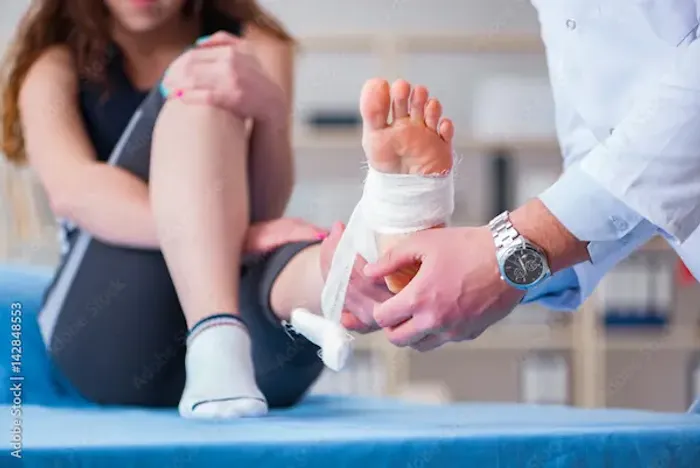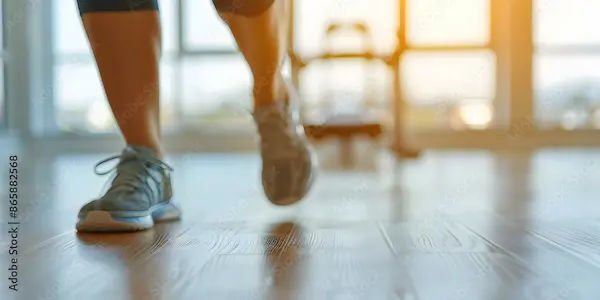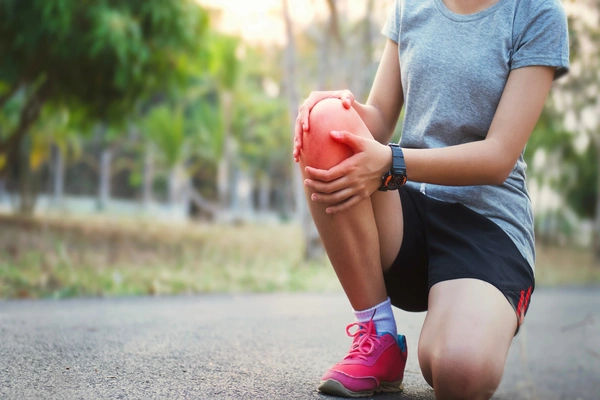Guide to Acl Rehabilitation And Return To Sports
Know about the ACL, what it is, the mechanism of ACL, surgical and non-surgical ways to manage, rehabilitation phases, mental game and sport re-testing.

Written by Dr. Rohinipriyanka Pondugula
Reviewed by Dr. M L Ezhilarasan MBBS
Last updated on 7th Oct, 2025

Introduction
Suffering an ACL tear can feel like a devastating setback, whether you're a professional athlete or a weekend warrior. The road to recovery is often portrayed as long and arduous, filled with uncertainty. This comprehensive guide demystifies the entire process, from the moment of injury to the triumphant return to play. We'll walk you through the phases of ACL rehabilitation, the critical decision points, the mental challenges, and the objective tests that signal you're ready for a safe and strong return to sports. Understanding this journey is the first step toward taking control of your recovery and emerging stronger than before.
Understanding the ACL Injury: More Than Just a Torn Ligament
Let's see the ACL injury in detail below:
What is the ACL, and why is it So Important?
The Anterior Cruciate Ligament (ACL) is one of the key ligaments that stabilise your knee joint. It runs diagonally
through the middle of the knee, connecting the thigh bone (femur) to the shin bone (tibia). Its primary job is to prevent the tibia from sliding out in front of the femur and to provide rotational stability to the knee. During ACL rehabilitation, the focus isn't just on healing this ligament, but on retraining the entire leg to work in a coordinated, stable way to protect the new graft or healed tissue.
Consult a Top General Practitioner for Personalised Advice
Common Mechanisms of an ACL Tear
ACL injuries are typically non-contact injuries involving sudden stops, changes in direction, or awkward landings from a jump. Think of a basketball player pivoting sharply to defend, a soccer player cutting to avoid a defender, or a skier landing off-balance. These movements place enormous strain on the ligament, often leading to a tear. Understanding the mechanism is crucial for preventing a second ACL tear later in the process.
Surgery vs. Non-Surgical Management: Making the Right Choice
Not every torn ACL requires surgery. The decision depends on several factors:
- Activity Level: Young, athletic individuals who want to return to sports involving cutting and pivoting will almost
always need surgery (ACL reconstruction). - Degree of Instability: If the knee gives way during daily activities, surgery is recommended to restore stability.
- Associated Injuries: Damage to other structures, like the meniscus or cartilage, may necessitate surgical intervention.
Non-surgical management, involving intensive physical therapy, may be an option for less active individuals or those
with a partial tear who do not experience instability. If you're unsure about the best path forward, consulting an orthopaedic specialist via Apollo24|7 can provide clarity based on your specific MRI findings and lifestyle goals.
The ACL Rehabilitation Journey: A Phased Roadmap to Recovery
A successful ACL rehab protocol timeline is not a one-size-fits-all program but a flexible roadmap guided by a physical therapist. It typically spans 9 to 12 months, focusing on meeting specific milestones rather than rigid timeframes.
Phase 1: The Immediate Post-Op Period (Weeks 1-2) - Protecting the Graft
The primary goal immediately after surgery is to manage pain and swelling while protecting the delicate new graft. This
phase is about controlled healing.
Key Goals and Exercises in the First Two Weeks
- Goals: Reduce swelling, regain full knee extension (straightening), and reactivate the quadriceps muscle, which often
"shuts off" after surgery. - Exercises: Ankle pumps, heel slides, quad sets (tightening the thigh muscle), and straight leg raises. Weight-bearing is
often limited with crutches.
Phase 2: Building a Foundation (Weeks 2-6) - Regaining Motion and Activating Muscles
As initial healing occurs, the focus shifts to restoring the full range of motion and building foundational strength. You'll work on bending and straightening the knee fully and continue to strengthen the core and hip muscles, which are vital for knee health.
Phase 3: Strengthening and Control (Months 2-4) - Beyond Basic Strength
This is where the real work begins. The emphasis moves from basic strength to neuromuscular control and proprioception—your body's ability to sense the position of the joint in space. This phase includes:
Strength Training: Squats, lunges, and leg presses (with controlled weight).
Balance and Control: Single-leg stands on unstable surfaces, balance boards.
The Critical Role of Neuromuscular Training
This type of training rewires your brain-to-muscle connection, teaching your body to stabilise the knee instinctively during dynamic movements. It's a cornerstone of modern ACL rehabilitation and is critical for preventing future injuries.
Phase 4: Running, Agility, and Sport-Specific Drills (Months 4-9)
This is a major milestone. Once you have adequate strength and control, you can gradually reintroduce running in a straight line, followed by agility work like zig-zag runs, hopping, and jumping. Drills are progressively made more complex to mimic the demands of your specific sport.
Phase 5: Return to Sport Preparation (Months 9-12+) - The Final Hurdle
The final phase involves high-intensity, sport-specific training. You'll practice cutting, pivoting, and reacting in controlled environments that simulate game situations. This phase bridges the gap between being "clinically healed" and being "game-ready."
The Mental Game: The Overlooked Key to a Successful Comeback
The physical challenge of ACL rehabilitation is only half the battle. The psychological impact—fear of re-injury, frustration, and loss of identity can be significant. It's common to feel hesitant or anxious when first attempting a cutting manoeuvre or landing from a jump. Working with a sports psychologist or a supportive physical therapist can help you build confidence, set realistic goals, and develop coping strategies. Acknowledging and addressing these mental hurdles after ACL surgery is non-negotiable for a complete recovery.
Return to Sport Testing: Are You Really Ready?
Returning to play is not based on a date on the calendar. It's determined by passing a battery of objective tests that compare your injured leg to your non-injured leg. This is a critical step in the criteria for return to sport after ACL reconstruction.
Common Physical Performance Tests
- Strength Tests: Isokinetic testing to ensure your quad and hamstring strength is at least 90% of the other leg.
- Hop Tests: Single-leg hop for distance, triple hop, and cross-over hop test to measure power and confidence.
- Movement Quality: Video analysis of landing mechanics during a jump to ensure proper form and reduce re-injury risk.
The Importance of Psychological Readiness
Alongside physical tests, questionnaires often assess your confidence in the knee. If you don't believe your knee is
strong, you're more likely to compensate with poor mechanics, increasing re-injury risk.
Preventing Re-Injury: Building a Bulletproof Knee for the Future
The work doesn't stop once you're back on the field. The risk of a second ACL injury, especially in the first two years, is
elevated. A continued focus on preventing a second ACL tear through ongoing strength training, plyometrics, and
proper movement patterns is essential. This should become a permanent part of your training regimen.
Conclusion
The journey from an ACL tear to a successful return to sports is one of the most challenging endeavours an athlete can face. It demands patience, perseverance, and a deep commitment to the process. By understanding the phased nature of ACL rehabilitation, respecting the timeline for healing, and addressing both the physical and psychological components, you can navigate this path with confidence. Remember, the goal is not just to get back on the field, but to return stronger, smarter, and more resilient than you were before the injury. Your comeback story is waiting to be written—one dedicated session at a time. If you're experiencing knee instability or pain after an injury, don't self-diagnose. Book a physical visit to an orthopaedic specialist with Apollo24|7 to get an accurate diagnosis and a personalised treatment plan.
Consult a Top General Practitioner for Personalised Advice
Consult a Top General Practitioner for Personalised Advice

Dr. Mainak Baksi
General Practitioner
13 Years • MBBS , MD (MPH)
Howrah
Mainak Baksi Clinic, Howrah
(50+ Patients)

Dr Summaiya Banu
General Practitioner
8 Years • MBBS
Hyderabad
Apollo 24|7 Clinic, Hyderabad
(225+ Patients)

Dr. Shaik Abdul Kalam
General Practitioner
3 Years • MD (Physician)
Visakhapatnam
Apollo 24|7 Clinic - Andhra Pradesh, Visakhapatnam
(150+ Patients)

Dr Divya Lekha Gunta
General Practitioner
10 Years • MBBS, MD (Pathology)
Visakhapatnam
Apollo 24|7 Clinic - Andhra Pradesh, Visakhapatnam

Dr. Dixant Chhikara
General Practitioner
4 Years • MBBS
Delhi
SKYNN CARE, Delhi
Consult a Top General Practitioner for Personalised Advice

Dr. Mainak Baksi
General Practitioner
13 Years • MBBS , MD (MPH)
Howrah
Mainak Baksi Clinic, Howrah
(50+ Patients)

Dr Summaiya Banu
General Practitioner
8 Years • MBBS
Hyderabad
Apollo 24|7 Clinic, Hyderabad
(225+ Patients)

Dr. Shaik Abdul Kalam
General Practitioner
3 Years • MD (Physician)
Visakhapatnam
Apollo 24|7 Clinic - Andhra Pradesh, Visakhapatnam
(150+ Patients)

Dr Divya Lekha Gunta
General Practitioner
10 Years • MBBS, MD (Pathology)
Visakhapatnam
Apollo 24|7 Clinic - Andhra Pradesh, Visakhapatnam

Dr. Dixant Chhikara
General Practitioner
4 Years • MBBS
Delhi
SKYNN CARE, Delhi
More articles from Sports Injury
Frequently Asked Questions
1. What is the most important exercise during early ACL rehab?
The most critical early exercise is often the 'quad set' (tightening the thigh muscle with the leg straight). This helps reactivate the quadriceps, which is essential for stabilising the knee and preventing muscle atrophy.
2. Can you fully recover from an ACL tear without surgery?
Yes, some individuals can, particularly if they are less active or do not experience knee instability during daily life. However, for those wishing to return to high-demand sports, surgery is usually necessary to restore full stability and function.
3. What is the difference between a hamstring graft and a patellar tendon graft for ACL reconstruction?
Both are common and effective. A patellar tendon graft (BTB) is often considered the 'gold standard' for its strong bone-to-bone healing, but it may cause more anterior knee pain. A hamstring tendon graft is popular and has an easier initial recovery, but may require more dedicated hamstring strengthening later.
4. Why does ACL rehab take so long (9-12 months)?
The timeline is primarily due to the biological process of 'ligamentization,' where the new graft slowly transforms into a strong, native-like ligament. Rushing this process before the graft is strong enough significantly increases the risk of re-tear.
5. How can I prevent another ACL injury after I return to sports?
Continue a maintenance program that includes strength training (especially for glutes and hamstrings), plyometrics (jump training), and agility drills. Focusing on proper landing and cutting mechanics is key to building a bulletproof knee.

